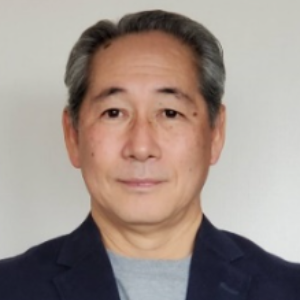Title : Development of next-generation process for effective utilization of low-grade aluminum dross to achieve carbon neutrality
Abstract:
Aluminum dross generated from scrap aluminum still involves considerable amount of metal aluminum with impurities of aluminum oxide, spinel, aluminum nitride, and so on. It is necessary to recover the metal aluminum and also to utilize the impurities. This paper introduces the total process to treat the aluminum dross, which involves the multi-stage unit operations, such as (1) mutual separation of scrap aluminum into wrought aluminum, casting aluminum, other impurities for optimizing the following melting process in a reverberatory furnace by using LIBS, Lasor Induced Breakdown Spectroscopy, sorting, (2) separation of aluminum dross generated in the stage (1) into high-grade metal aluminum concentrate and low-grade metal aluminum tailing by combining the methods of selective grinding, sieving, eddy current separation, (3) recovery of pure metal aluminum from the high grade metal aluminum concentrate by metal reclaiming machine, (4) production and purification of green hydrogen and ammonia from the low grade metal aluminum tailing by alkaline leaching, (5) production of catalyst support from the residue of the stage (4) by firing and compression molding, and (6) LCA, Life Cycle Assessment, of the total process.
This paper also describes the major results in the stage of (1) and (2), which indicates the possibility of (1) mutual separation of aluminum alloys and impurity other metal/non-metal phase by LIBS sorting and (2) selective grinding of metal aluminum alloys and oxide/nitride impurities by combining a vibrating rod mill, sieving, and eddy current separation. This process could utilize most of the components in the aluminum dross as high-grade raw materials, such as metal aluminum, hydrogen, ammonia, and catalyst support. This process also could reduce huge amount of CO2 emission to produce the above high quality raw materials.
Audience Take Away Notes:
- Total utilization process of aluminum dross which is usually troublesome and sometimes hazardous
- They might catch a novel treatment process of utilizing aluminum dross by combining various physical treatment processes which require less energy compared with chemical processes
- We will provide a new concept on the materials recycling by using physical separation technologies
- Physical separation technologies require much lower energy and cost in the process compared with chemical one, then, it contributes much to save energy and cost in practical plants
- Yes, it will improve the accuracy of a design, or provide new information to assist in a design problem
- Our research group is now trying to construct a commercial plant using this process and we believe this process will contribute much for establishing a practical and effective utilization of aluminum dross


